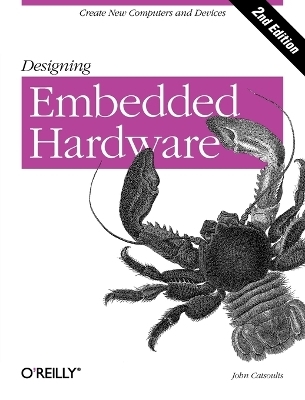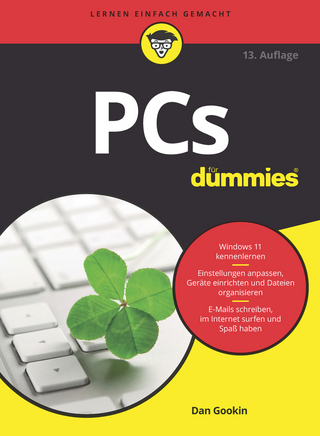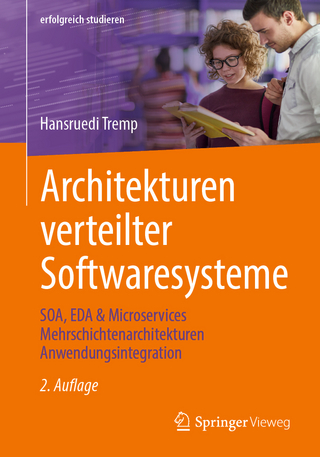
Designing Embedded Hardware 2e
O'Reilly Media (Verlag)
978-0-596-00755-3 (ISBN)
Embedded computer systems literally surround us: they're in our cell phones, PDAs, cars, TVs, refrigerators, heating systems, and more. In fact, embedded systems are one of the most rapidly growing segments of the computer industry today. Along with the growing list of devices for which embedded computer systems are appropriate, interest is growing among programmers, hobbyists, and engineers of all types in how to design and build devices of their own. Furthermore, the knowledge offered by this book into the fundamentals of these computer systems can benefit anyone who has to evaluate and apply the systems. The second edition of Designing Embedded Hardware has been updated to include information on the latest generation of processors and microcontrollers, including the new MAXQ processor. If you're new to this and don't know what a MAXQ is, don't worry--the book spells out the basics of embedded design for beginners while providing material useful for advanced systems designers.
Designing Embedded Hardware steers a course between those books dedicated to writing code for particular microprocessors, and those that stress the philosophy of embedded system design without providing any practical information. Having designed 40 embedded computer systems of his own, author John Catsoulis brings a wealth of real-world experience to show readers how to design and create entirely new embedded devices and computerized gadgets, as well as how to customize and extend off-the-shelf systems. Loaded with real examples, this book also provides a roadmap to the pitfalls and traps to avoid.
Designing Embedded Hardware includes: * The theory and practice of embedded systems * Understanding schematics and data sheets * Powering an embedded system * Producing and debugging an embedded system * Processors such as the PIC, Atmel AVR, and Motorola 68000-series * Digital Signal Processing (DSP) architectures * Protocols (SPI and I2C) used to add peripherals * RS-232C, RS-422, infrared communication, and USB * CAN and Ethernet networking * Pulse Width Monitoring and motor control If you want to build your own embedded system, or tweak an existing one, this invaluable book gives you the understanding and practical skills you need.
John Catsoulis lives under the tropical sun in Brisbane, Australia. He has a Bachelor of Science with Honors (Griffith University) with a triple major in quantum physics, electronics and mathematics, and a Master of Engineering (La Trobe University) in specialized computer architectures. He is founder and Managing Director of Embedded, a company that designs computers for industry, government, military and scientific agencies. When not slaving over a hot microprocessor, he enjoys hiking and camping, wildlife and landscape photography, fishing, dabbling in permaculture, cooking Indian and Mediterranean food, and playing model trains with his nephews, Andrew and James.
Preface 1. An Introduction to Computer Architecture Concepts; Memory Input/Output DMA Embedded Computer Architecture; 2. Assembly Language Registers Machine Code Signed Numbers; Addressing Modes Coding in Assembly Disassembly Position-Independent Code Loops Masking Indexed Addressing; Stacks Timing of Instructions 3. Forth/Open Firmware Introducing Forth String Words Stack Manipulation Creating New Words Comments if ... else Loops Data Structures; Interacting with Hardware and Memory Forth Programming Guidelines; 4. Electronics 101 Voltage and Current Analog Signals; Power Reading Schematics Resistors Capacitors RC Circuits Inductors Transformers Diodes Crystals; Digital Signals Electrical Characteristics Logic Gates; The Importance of Reading the Datasheet 5. Power Sources The Stuff Out of the Wall Batteries Low Power Design Regulators LM78xx Regulators MAX603/MAX604 Regulators MAX1615 Regulator; MAX724 Regulator Electrical Noise and Interference 6. Building Hardware Tools Soldering Quick Construction Printed-Circuit Boards Building It JTAG 7. Adding Peripherals Using SPI Serial Peripheral Interface; 8. Adding Peripherals Using I2C Overview of I2C Adding a Real-Time Clock with I2C Adding a Small Display with I2C; 9. Serial Ports UARTs Error Detection Old Faithful: RS-232C RS-422 RS-485 10. IrDA Introduction to IrDA; 11. USB Introduction to USB USB Packets Physical Interface; Implementing a USB Interface 12. Networks Controller Area Network (CAN) Ethernet 13. Analog Amplifiers Analog to Digital Conversion Interfacing an External ADC Temperature Sensor Light Sensor Accelerometer Pressure Sensors; Magnetic-Field Sensor Digital to Analog Conversion PWM; Motor Control Switching Big Loads 14. The PIC Microcontrollers; A Tale of Two Processors Starting Simple A Bigger PIC; PIC-Based Environmental Datalogger Motor Control with a PIC; 15. The AVR Microcontrollers The AVR Architecture The ATtiny15 Processor Downloading Code A Bigger AVR AVR-Based Datalogger Bus Interfacing 16. 68HC11 Architecture of the 68HC11 A Simple 68HC11-Based Computer 17. MAXQ Architectural Overview Schematics 18. 68000-Series Computers The 68000 Architecture A Simple 68000-Based Computer 19. DSP-Based Controllers The DSP56800 A DSP56805-Based Computer JTAG; Index
| Erscheint lt. Verlag | 21.6.2005 |
|---|---|
| Reihe/Serie | O'Reilly Ser. |
| Verlagsort | Sebastopol |
| Sprache | englisch |
| Einbandart | Paperback |
| Themenwelt | Mathematik / Informatik ► Informatik ► Theorie / Studium |
| Informatik ► Weitere Themen ► Hardware | |
| ISBN-10 | 0-596-00755-8 / 0596007558 |
| ISBN-13 | 978-0-596-00755-3 / 9780596007553 |
| Zustand | Neuware |
| Informationen gemäß Produktsicherheitsverordnung (GPSR) | |
| Haben Sie eine Frage zum Produkt? |
aus dem Bereich


